Featured image credit: SpaceX
Lift Off Time | July 01, 2023 – 15:12 UTC | 11:12 EDT |
|---|---|
Mission Name | Euclid Telescope, ESA’s mission to map the dark universe |
Launch Provider | SpaceX |
Customer | European Space Agency (ESA) |
Rocket | Falcon 9 Block 5, booster TBD |
Launch Location | Space Launch Complex 40 (SLC-40), Cape Canaveral Space Force Station, Florida, USA |
Payload mass | ~2,100 kg (~4,600 lb) |
Where are the satellites going? | Lagrange Point 2 (Sun-Earth L2) |
Will they be attempting to recover the first stage? | Yes |
Where will the first stage land? | ~697 km downrange on A Shortfall of Gravitas Tug: Unknown; Support: Doug |
Will they be attempting to recover the fairings? | The fairing halves will be recovered from the water ~700 km downrange by Bob |
Are these fairings new? | Yes |
How’s the weather looking? | The weather is currently 90% GO for launch (as of June 30, 2023 at 13:00 UTC) |
This will be the: | – 236th Falcon 9 launch – 171st Falcon 9 flight with a flight-proven booster – 177th re-flight of a booster – 43rd re-flight of a booster in 2023 – 204th booster landing – 130th consecutive landing (a record) – 45th launch for SpaceX in 2023 – 131st SpaceX launch from SLC-40 – 97th orbital launch attempt of 2023 |
Where to watch | Official Livestream |
What’s This All Mean?
SpaceX will launch the Euclid Space Telescope for the European Space Agency (ESA). The Falcon 9 rocket will lift off from Space Launch Complex 40, at the Cape Canaveral Space Force Station, in Florida, where it will send the telescope to the Earth-Sun Lagrange point. This telescope will take roughly four weeks to reach this point, where it will then operate for six years.
What Is The Euclid Space Telescope?
Euclid is a visible-to-near-infrared space telescope developed by the European Space Agency (ESA) and the Euclid Consortium. The objective of the Euclid mission is to better understand dark energy and dark matter by accurately measuring the acceleration of the universe. To achieve this, the Korsch-type telescope will measure the shapes of galaxies at varying distances from Earth and investigate the relationship between distance and redshift.
The Euclid space telescope will use its incredibly wide field of view to hunt for two of the universe’s most mysterious components: dark matter and dark energy. Dark matter is an undetected form of matter that is thought to account for approximately 85% of the matter in the universe and about a quarter of its total energy density. Dark energy is the form of energy that is thought to permeate all of space and accelerate the expansion of the universe.
The Euclid space telescope will create a great map of the large-scale structure of the Universe across space and time by observing billions of galaxies out to 10 billion light-years, across more than a third of the sky. The telescope will measure the shapes, positions, and distances of galaxies with unprecedented accuracy.
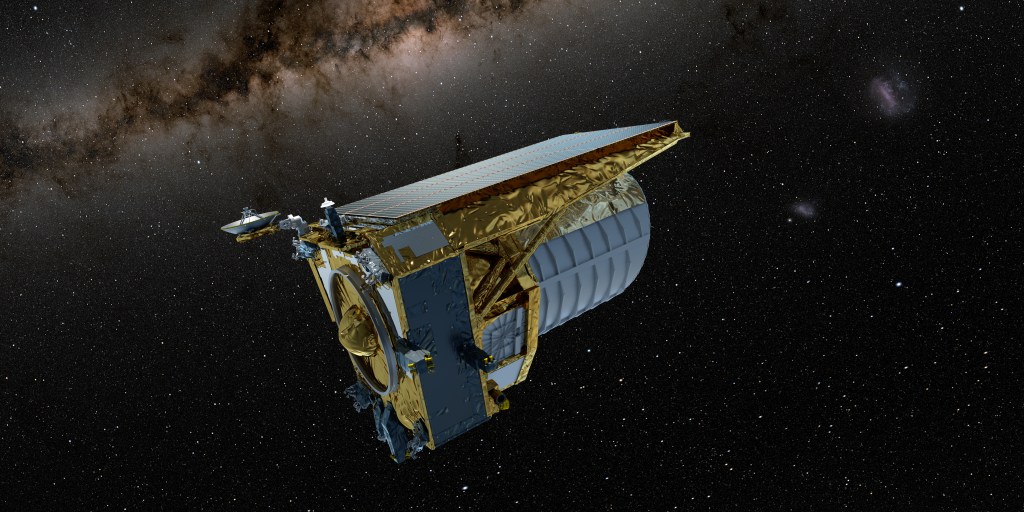
The Euclid Consortium is an international group of scientists who are responsible for designing, building, and operating the Euclid space telescope. The consortium includes over 1,000 scientists from more than 100 institutions in Europe, North America, and Asia.
The spacecraft has a launch mass of roughly 2,100 kg and is 4.5 meters tall and 3.1 meters in diameter. It was built by Thales Alenia and EADS Astrium (which later became Airbus Defence and Space, telescope). To power the spacecraft, it has solar cells and batteries.
What Is Falcon 9 Block 5?
The Falcon 9 Block 5 is SpaceX’s partially reusable two-stage medium-lift launch vehicle. The vehicle consists of a reusable first stage, an expendable second stage, and, when in payload configuration, a pair of reusable fairing halves.
First Stage
The Falcon 9 first stage contains 9 Merlin 1D+ sea-level engines. Each engine uses an open gas generator cycle and runs on RP-1 and liquid oxygen (LOx). Each engine produces 845 kN of thrust at sea level, with a specific impulse (ISP) of 285 seconds, and 934 kN in a vacuum with an ISP of 313 seconds. Due to the powerful nature of the engine, and the large amount of them, the Falcon 9 first stage is able to lose an engine right off the pad, or up to two later in the flight, and be able to successfully place the payload into orbit.
The Merlin engines are ignited by triethylaluminum and triethylborane (TEA-TEB), which instantly burst into flames when mixed in the presence of oxygen. During static fire and launch the TEA-TEB is provided by the ground service equipment. However, as the Falcon 9 first stage is able to propulsively land, three of the Merlin engines (E1, E5, and E9) contain TEA-TEB canisters to relight for the boost back, reentry, and landing burns.
Second Stage
The Falcon 9 second stage is the only expendable part of the Falcon 9. It contains a singular MVacD engine that produces 992 kN of thrust and an ISP of 348 seconds. The second stage is capable of doing several burns, allowing the Falcon 9 to put payloads in several different orbits.
SpaceX is currently flying two different versions of the MVacD engine’s nozzle. The standard nozzle design is used on high-performance missions. The other nozzle is a significantly shorter version of the standard, decreasing both performance and material usage; with this nozzle, the MVacD engine produces 10% less thrust in space. This nozzle is only used on lower-performance missions, as it decreases the amount of material needed by 75%. This means that SpaceX can launch over three times as many missions with the same amount of Niobium as with the longer design.
For missions with many burns and/or long coasts between burns, the second stage is able to be equipped with a mission extension package. When the second stage has this package it has a grey strip, which helps keep the RP-1 warm, an increased number of composite-overwrapped pressure vessels (COPVs) for pressurization control, and additional TEA-TEB.
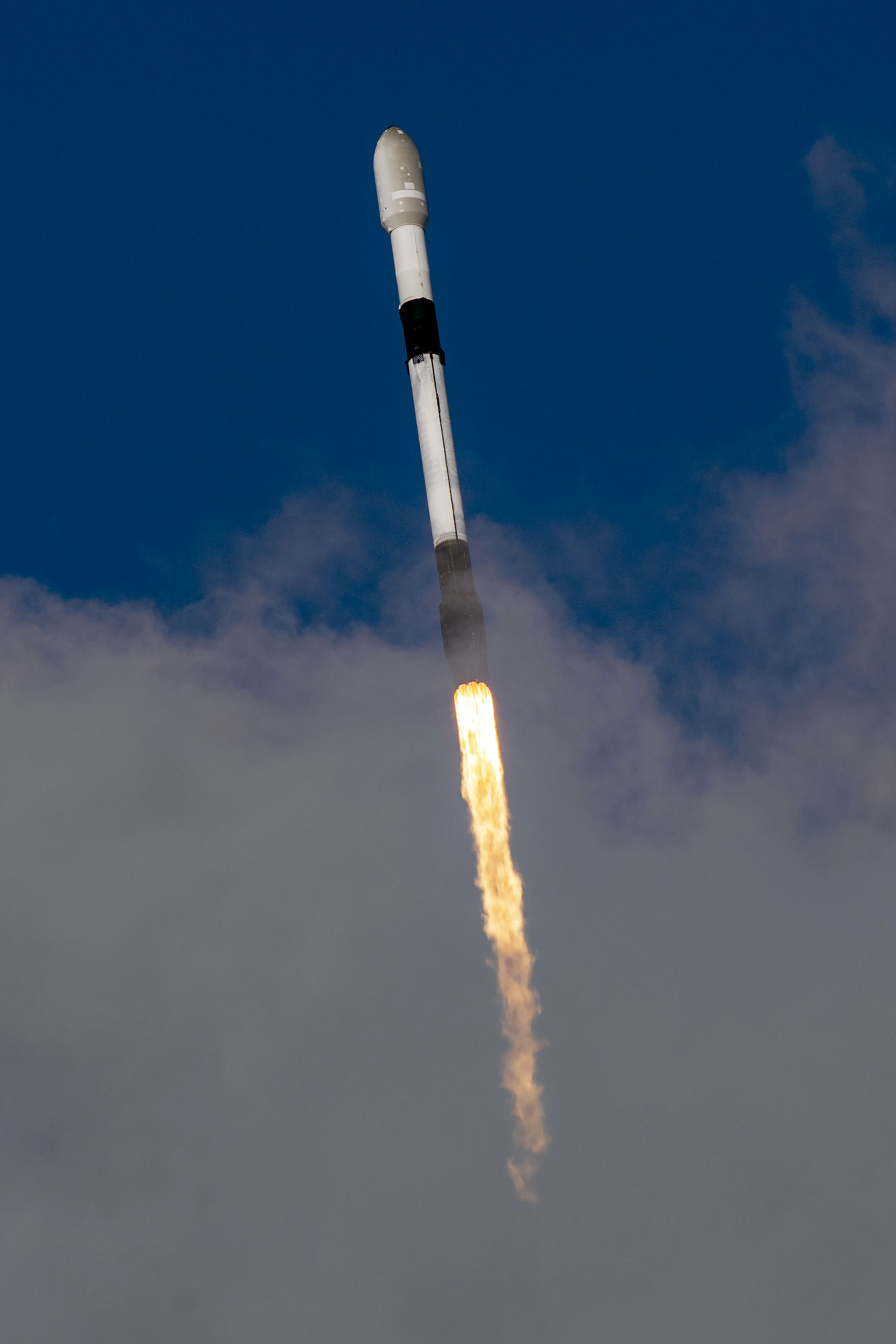
Falcon 9 Booster
The booster supporting the Euclid space telescope is currently unknown.
Following stage separation, Falcon 9 will conduct two burns. These burns aim to softly touch down the booster on SpaceX’s autonomous spaceport drone ship A Shortfall of Gravitas.
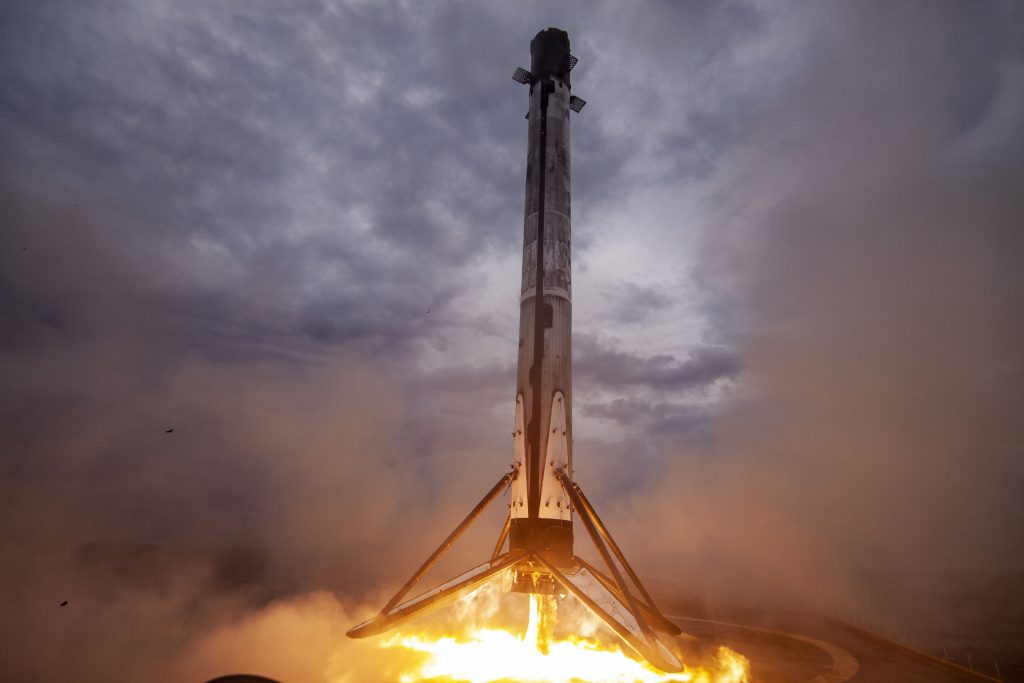
Falcon 9 Fairings
The Falcon 9’s fairing consists of two dissimilar reusable halves. The first half (the half that faces away from the transport erector) is called the active half, and houses the pneumatics for the separation system. The other fairing half is called the passive half. As the name implies, this half plays a purely passive role in the fairing separation process, as it relies on the pneumatics from the active half.
Both fairing halves are equipped with cold gas thrusters and a parafoil which are used to softly touch down the fairing half in the ocean. SpaceX used to attempt to catch the fairing halves, however, at the end of 2020 this program was canceled due to safety risks and a low success rate. On Euclid, SpaceX will attempt to recover the fairing halves from the water with its recovery vessel Doug.
In 2021, SpaceX started flying a new version of the Falcon 9 fairing. The new “upgraded” version has vents only at the top of each fairing half, by the gap between the halves, whereas the old version had vents placed spread equidistantly around the base of the fairing. Moving the vents decreases the chance of water getting into the fairing, making the chance of a successful scoop significantly higher.
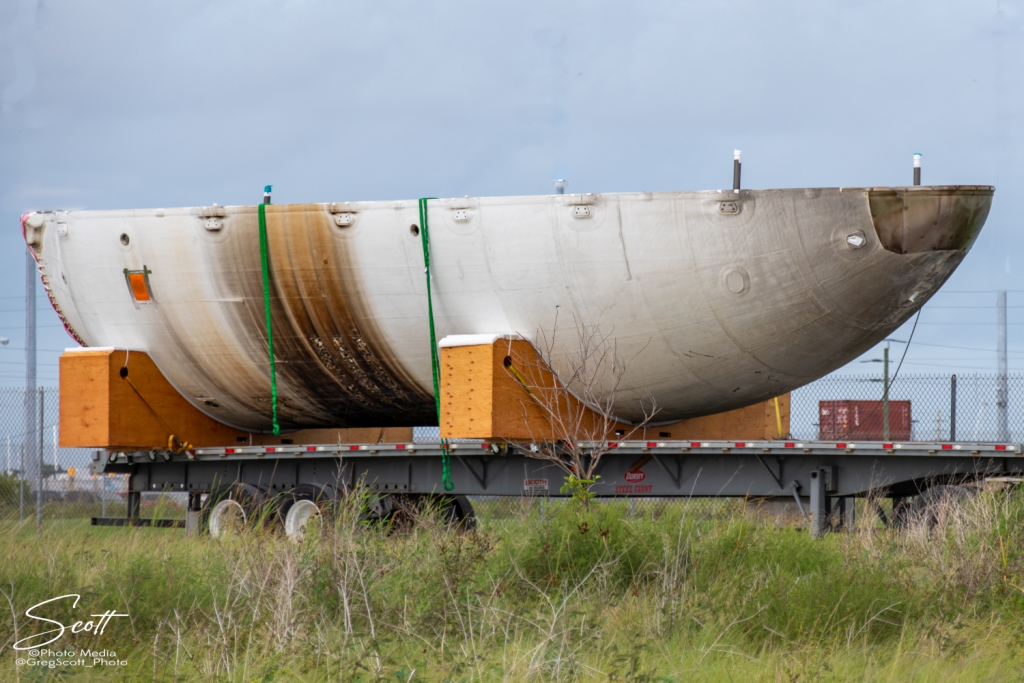

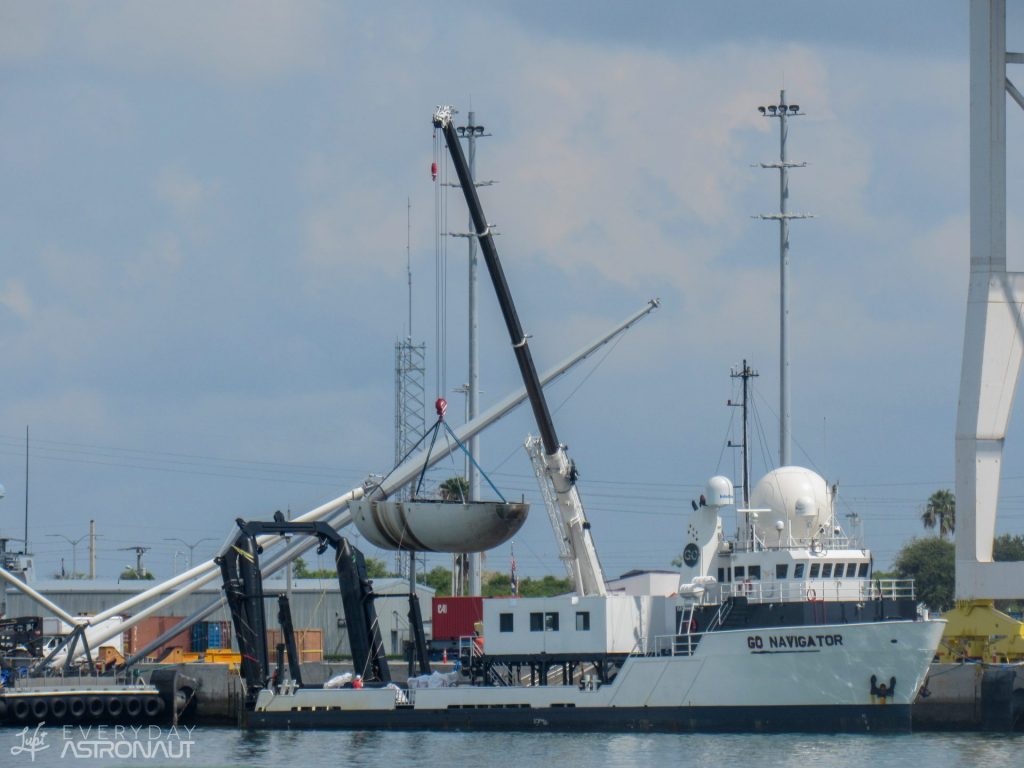
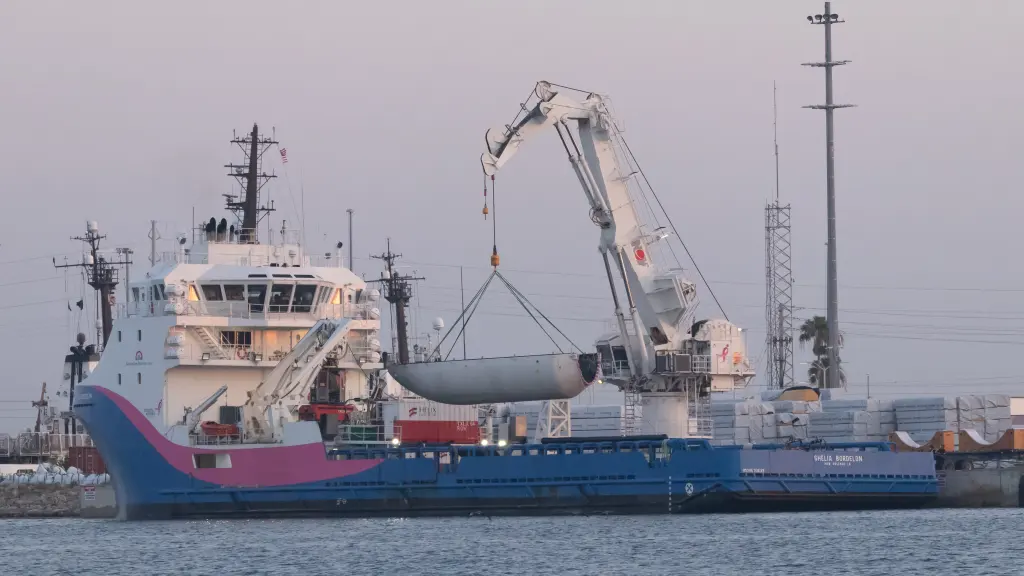
Euclid Countdown
All times are approximate
| HR/MIN/SEC | EVENT |
|---|---|
| 00:38:00 | SpaceX Launch Director verifies go for propellant load |
| 00:35:00 | RP-1 (rocket-grade kerosene) loading underway |
| 00:35:00 | 1st stage LOX (liquid oxygen) loading underway |
| 00:16:00 | 2nd stage LOX loading underway |
| 00:07:00 | Falcon 9 begins engine chill prior to launch |
| 00:01:00 | Command flight computer to begin final prelaunch checks |
| 00:01:00 | Propellant tank pressurization to flight pressure begins |
| 00:00:45 | SpaceX Launch Director verifies go for launch |
| 00:00:03 | Engine controller commands engine ignition sequence to start |
| 00:00:00 | Falcon 9 liftoff |


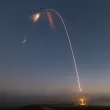

Nice website, I can’t believe I only just found it. What actually happens to stage 2? Does it go into orbit with the satellite? Will it go into a graveyard orbit that eventually decays so it can burn up in earths atmosphere? Something else?